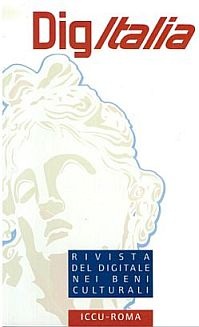Imago et umbra Programma di digitalizzazione per l’Archivio storico della Pontificia Università Gregoriana: criteri, metodi e strumenti
Keywords:
Imago, et, Umbra, Digitalizzazione, Archivio, Storico, Pontificia, Università, Gregoriana, Manoscritti, APUG, Pinakes, PK,Abstract
Il titolo di questo progetto fa riferimento a un’espressione che si trova all’interno del corpus degli scritti di Nicolò Cusano («Sermo LXI, […] Vita igitur istius mundi non est vita, sed imago et umbra vitae verae; ita de sapientia et prudentiaet laetitia et singulis aliis») con la quale vengono indicate le realtà di questo mondo che, sebbene da una parte rappresentano (imago) nel contempo non lo fanno in modo totale e assoluto (umbra). In maniera analoga il progetto che qui si presenta, pur portando alla luce, in immagini, i documenti, non potrà mai esaurirne i contenuti.
Downloads
Download data is not yet available.
Downloads
Published
2010-07-13
How to Cite
Bozzi, A., Morales, M. M., & Rufino, M. (2010). Imago et umbra Programma di digitalizzazione per l’Archivio storico della Pontificia Università Gregoriana: criteri, metodi e strumenti. DigItalia, 5(2), 79–99. Retrieved from https://digitalia.cultura.gov.it/article/view/240
Issue
Section
Projects
License
The Authors publishing their contributions on this journal agree to the following conditions:
- The Authors detain intellectual property rights of their work and transfer the right of first publication of the work to the journal, under the following Licence: Attribution-ShareAlike 3.0 Italy (CC BY-SA 3.0 IT). This Licence allows third parties to share the work by attributing it to the Authors and clarifying that the work has been first published on this journal.
- Authors can sign other, non-exclusive licence agreements for the dissemination of the published word (e.g. to deposit it in an institutional archive or publish it in a monography), provided that they state that the work has been first published on this journal.
- Authors can disseminate their work online (e.g. in institutional repositories or on their personal websites) after its publication, to potentially enhance knowledge sharing, foster productive intellectual exchange and increase citations (see The Effect of Open Access).






